Ted and I saw some interesting vehicles on our BT. Jerusalem has a desert climate, so rainfall is scarce. As a result, Jerusalem is a very dusty city. I think vehicle owners see no point in trying to keep their vehicles clean, so they clear the windshield and go. I’ve never seen as many dirty vehicles as Ted and I saw in Jerusalem on our 2023 BT. I mean every car and every truck! It’s probably like living alongside a gravel road. You can wash your car, but as soon as you take it on the road, it’s dirty again. Practicality wins.
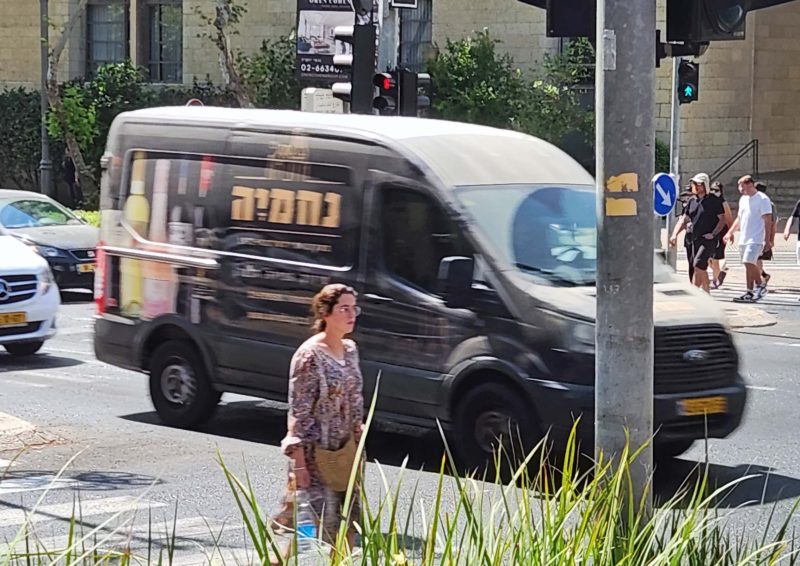
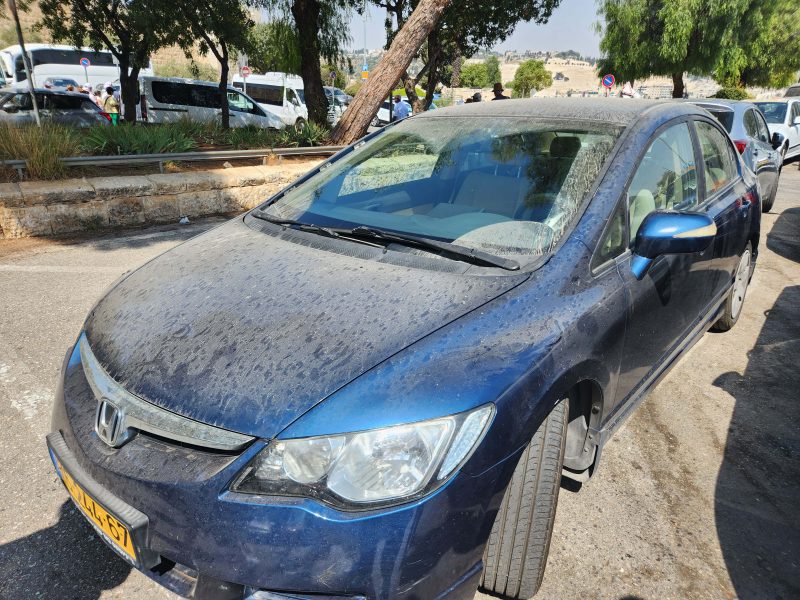
While Israeli vehicle styles tended to look like those in most major cities, Cairo and Aswan had a great variety of transportation modes, varying from sedans and large modern buses to three-wheeled mini-cars to donkey-drawn carts to handcarts propelled by human feet. They all shared the streets with no apparent rules of the road.
The street in front of our Cairo hotel had four lanes of traffic moving in each direction. There were no painted traffic lane lines, no stop signs or stop lights, and no marked crosswalks. One couple in our group wanted to cross the street to stand on the banks of the Nile River and said it was like taking your life in your hands to do that. Hanan told us later that “it’s easier to take a cab and make a u-turn than it is to cross the street in Cairo.”
The traffic seemed to move smoothly, but with the constant sound of horns—some long, some short—as cars moved forward, smoothly gliding from one lane to another, as if it was a dance. From our upper-story hotel window, it looked like a video game. I suspect there was a “horn code” with different horn signals to tell adjacent drivers, “Don’t change lanes because I’m passing you” and “Ok, thanks for letting me know.”
There was likely to be a horse- or donkey-drawn vehicle or a handcart in the traffic, but it was generally ignored, and the cars just beeped their horns (probably in code) and went around it. We occasionally saw a vehicle driving against the traffic in an outer lane, but the other drivers went around it as easily as they did the handcarts. Other times, we saw vehicles parked in the outermost traffic lanes (either side of the road) and drivers of cars simply weaved around those as well. If you needed to make a left turn, the secret seemed to be to do it with confidence. If you entered the intersection with confidence, oncoming drivers slowed or stopped to allow you to turn, then proceeded with their weaving and horn-honking. I asked Hanan what kind of traffic laws were in effect, and she said that, basically, you just drive as you please, but speed limits are very strictly enforced.
Mini-sized vehicles were everywhere in Egypt. I saw several at a single intersection in Aswan. Notice the absence of lane markings and stop lights at the corner.
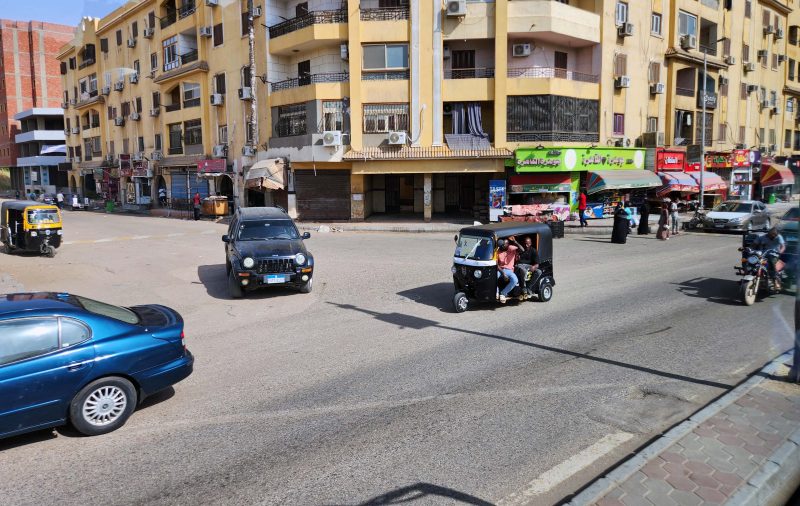
In Esna, we saw this horse-drawn buggy. The cart on the right is donkey-drawn. Heavy traffic didn’t bother them. I wish I’d been able to photograph at least one of the manual pushcarts we saw.

This donkey-drawn wagon was rolling along in Aswan.
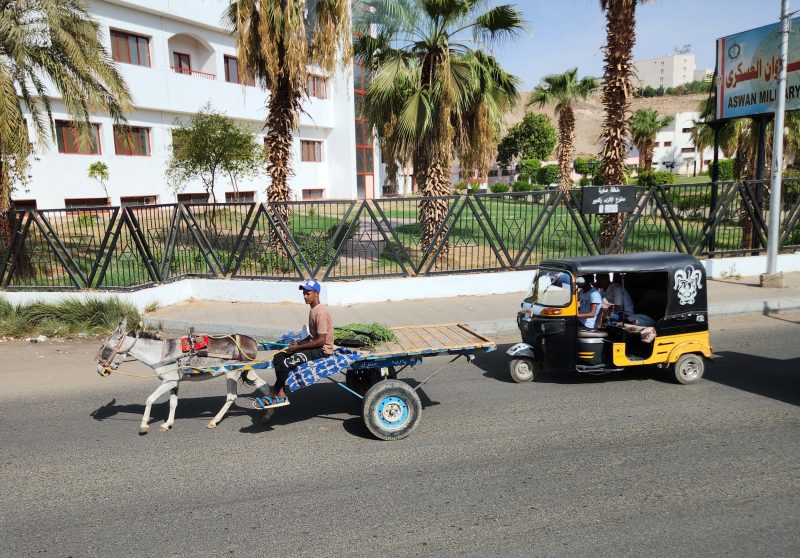
Little trucks were plentiful too. This vehicle looks like the front half of a motorcycle with a two-wheeled wagon attached.
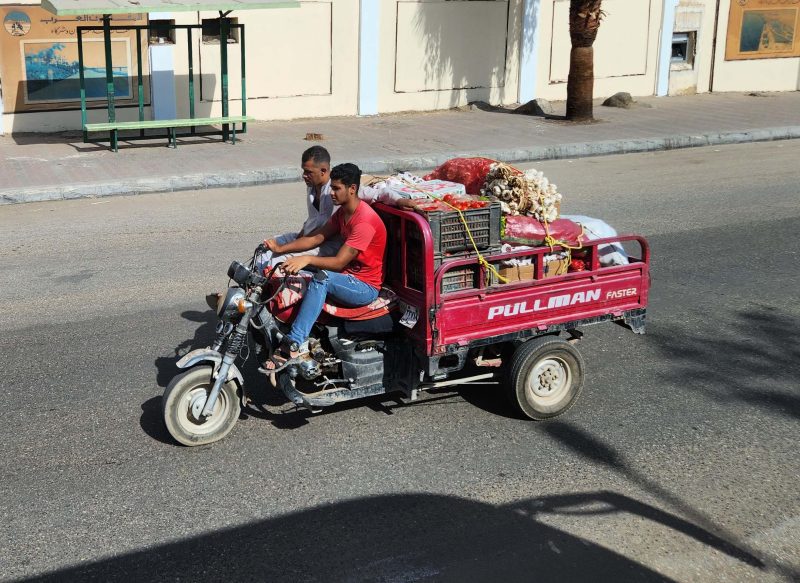
This little truck in Athens is also three-wheeled, but includes a cab. We saw a lot of these carrying loads higher than the side rails. As long as the load was balanced, there seemed to be no height limit. Sometimes, there were people sitting on top of the loads, even if the load was higher than the truck bed.
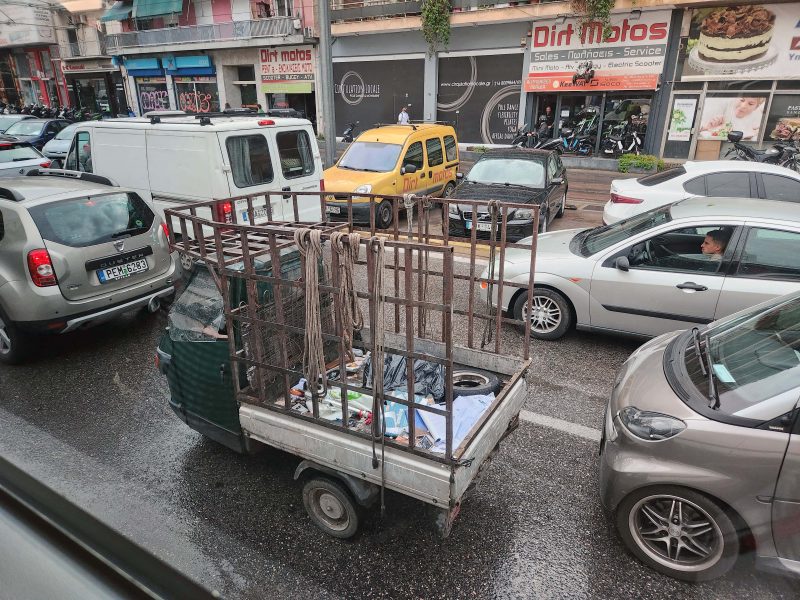
This truck in Qena, with three men sitting on the top, is underloaded, compared to others we saw. Maybe they just completed a delivery.
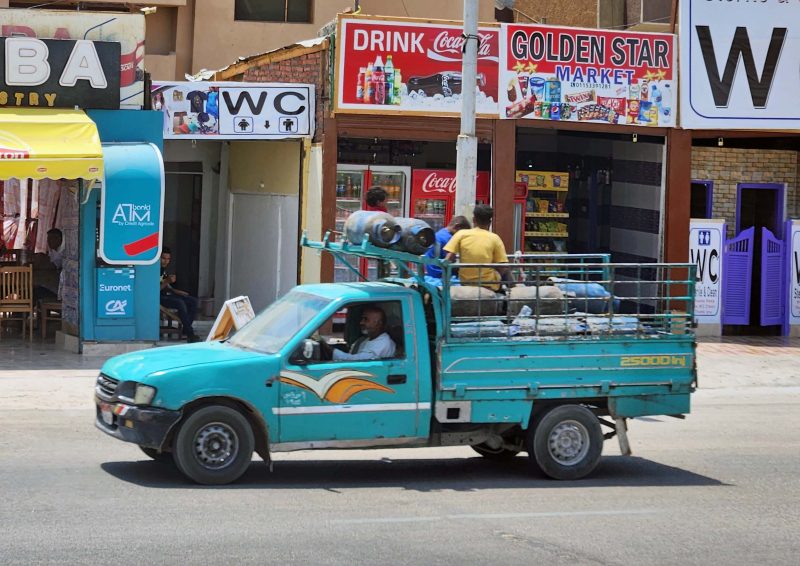
Mini vehicles transporting large numbers of people were also a common sight. Is there a contest to see how many people fit on a motorcycle? The motorcycle in the photo below has only four people on it. (The mom is holding the baby.) We saw no helmets and no visible fear of traffic danger. During one of our pre-excursion onboard talks, the speaker told a joke about motorcycles in Egypt.
A policeman stops a motorcycle and asks the driver, “Do you know you have six people on this motorcycle?” The astonished driver replies, “Six?! What happened to Ahmed?!”
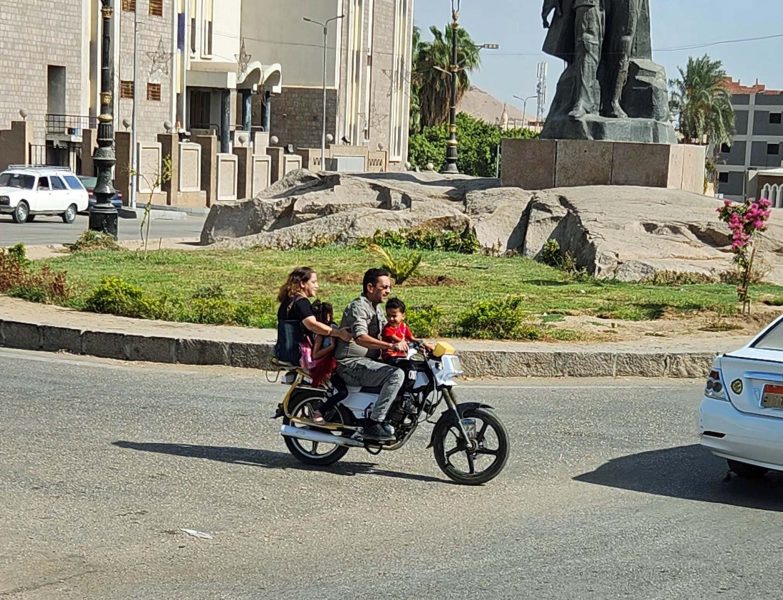
If a vehicle is too full, people simply hang outside of it, like these folks in Aswan.
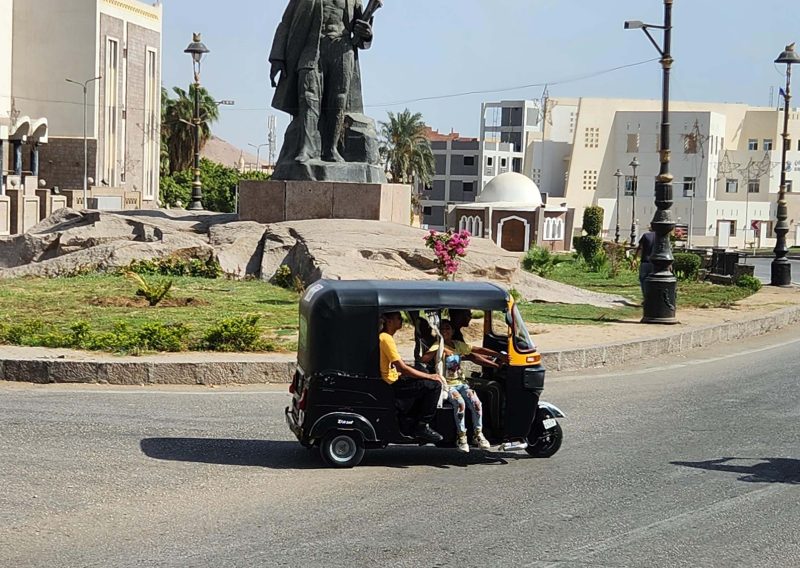
We saw so many station wagons like this one that I asked what they were. I learned that this is an Egyptian national taxi service. You can go to the taxi station and buy a ticket to travel to any city in Egypt in these cars. There were a lot of these on the roads in the early mornings and late afternoons, so I think they might also be used as local taxis for people going to work and coming home afterward.
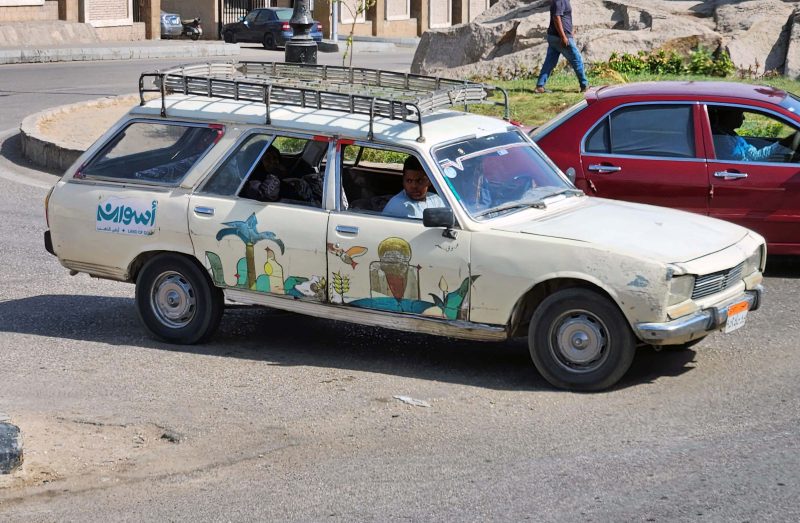
Thank goodness we always had a professional driver for our excursions, so that we didn’t have to figure out the roadway protocols in Egypt, or ride with five other people on a motorcycle.